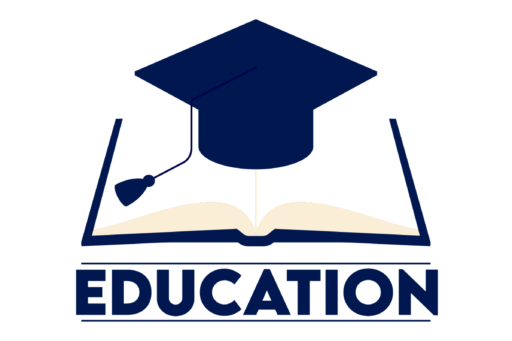Supporting Students with Special Needs In any educational setting, it’s essential to provide every student with an equal opportunity to learn and grow. Students with special needs deserve tailored support, as they may face unique challenges that require different teaching strategies, resources, and a supportive environment. An inclusive approach benefits not only students with disabilities but also their peers and educators, fostering empathy, patience, and diversity within the classroom. This blog will discuss the importance of supporting students with special needs and offer strategies for creating an inclusive and supportive learning environment.
Understanding Special Needs in Education
Special needs encompass a broad range of conditions that may affect a student’s physical, cognitive, emotional, or social development. These needs vary greatly and include physical disabilities, learning disabilities, emotional disorders, and developmental delays. Recognizing the unique needs of each student is the first step in providing effective support.
a. Types of Special Needs
Some of the most common types of special needs include:
- Learning Disabilities (e.g., dyslexia, dyscalculia): Affect reading, writing, or mathematical skills.
- Physical Disabilities (e.g., cerebral palsy, visual impairments): May limit mobility or sensory experiences.
- Developmental Disabilities (e.g., autism spectrum disorder): Impact communication, social skills, and adaptive behavior.
- Emotional and Behavioral Disorders (e.g., ADHD, anxiety disorders): Affect emotional regulation, focus, and behavior.
Each type requires a distinct approach, as what works for one student may not be effective for another. Educators should be familiar with different disabilities and the specific accommodations each might require.
Benefits of Inclusive Education
Inclusive education means providing students with special needs the opportunity to learn alongside their peers. This approach has been shown to foster a sense of belonging, improve academic outcomes, and enhance social skills for all students:
a. Promotes Empathy and Social Skills
When students with special needs are integrated into mainstream classrooms, their peers learn empathy, patience, and respect for diversity. They gain a better understanding of the challenges others may face and develop social skills that promote kindness and acceptance.
b. Improves Academic Performance for All Students
Studies suggest that students in inclusive classrooms often achieve higher academic outcomes than those in separate settings. This may be due to the use of differentiated instruction and personalized learning techniques that benefit all students, not just those with special needs.
c. Encourages Self-Advocacy
In inclusive settings, students with special needs learn to communicate their needs and advocate for themselves. This is an invaluable skill that empowers them to ask for help, participate actively, and eventually transition into more independent settings.

Strategies for Supporting Students with Special Needs
Creating an inclusive classroom requires thoughtful planning, adaptability, and collaboration among educators, support staff, and families. Here are some effective strategies for supporting students with special needs:
a. Differentiated Instruction
Differentiated instruction involves tailoring teaching methods, materials, and assessments to meet the diverse needs of students. This may include:
- Visual aids for students with learning disabilities
- Audio materials for students with visual impairments
- Hands-on activities for kinesthetic learners By providing various ways to engage with content, teachers can ensure that all students have access to the curriculum.
b. Individualized Education Programs (IEPs)
An Individualized Education Program (IEP) is a customized plan designed to meet the specific needs of a student with disabilities. It outlines the student’s strengths, areas of need, and the accommodations required for their success. IEPs are legally mandated in many countries, and they play a critical role in supporting students by ensuring they receive the necessary resources and adjustments.
c. Assistive Technology
Assistive technology can be transformative for students with special needs. For example:
- Text-to-speech software can help students with reading difficulties.
- Communication devices can support nonverbal students in expressing themselves.
- Screen readers can assist students with visual impairments in accessing digital content. By integrating assistive technology, teachers can enhance accessibility and engagement.
d. Flexible Seating and Classroom Layout
Creating a flexible classroom layout can make a big difference for students with physical disabilities or attention difficulties. For instance, some students may benefit from sitting closer to the teacher, while others might need a quieter area to minimize distractions. Adjustable seating, standing desks, and sensory-friendly spaces can help accommodate various needs.
e. Clear Communication and Visual Supports
Students with developmental or communication disorders often benefit from clear, concise communication. Teachers can use visual supports, such as charts, schedules, and diagrams, to clarify instructions and expectations. Visual aids can help students understand and remember information, making them valuable tools in inclusive classrooms.
f. Positive Behavior Support (PBS)
Positive Behavior Support is a proactive approach to managing challenging behaviors in the classroom. It involves setting clear expectations, providing consistent feedback, and rewarding positive behavior. PBS can help create a supportive environment where students feel safe, respected, and motivated to succeed.
The Role of Collaboration
Supporting students with special needs is a team effort. Collaboration between teachers, special education staff, therapists, and families is crucial for ensuring that students receive comprehensive support:
a. Parental Involvement
Parents and caregivers provide invaluable insights into a child’s strengths, challenges, and preferences. Involving them in decision-making and planning ensures that the support aligns with the student’s unique needs.
b. Teacher and Specialist Collaboration
General education teachers, special education teachers, and specialists (such as speech therapists or occupational therapists) should work together to develop and implement strategies that meet each student’s needs. Regular meetings and communication are essential for maintaining consistency in support and addressing any challenges that arise.
c. Peer Support
Peer support programs, such as buddy systems or peer tutoring, can be highly beneficial in inclusive classrooms. Peers can help students with special needs feel more comfortable, improve social skills, and provide additional academic assistance. These programs benefit both parties, as peer supporters develop empathy and leadership skills.
Challenges in Supporting Students with Special Needs
While inclusive education offers numerous benefits, there are also challenges. Recognizing and addressing these challenges is essential for creating an effective support system:
a. Resource Limitations
One of the biggest challenges in supporting students with special needs is the lack of resources. Schools may have limited funding for assistive technology, additional staff, or specialized training for teachers. Advocacy for more funding and resources is essential to ensure that all students receive the support they need.
b. Teacher Training
Not all teachers receive specialized training in special education. Professional development in this area can equip educators with the skills they need to support diverse learners effectively. Providing teachers with ongoing training opportunities helps them stay informed about best practices and new strategies.
c. Time Constraints
Supporting students with special needs often requires additional time for planning, meetings, and assessments. Balancing these demands with other classroom responsibilities can be challenging. Schools can help by offering additional planning time and support staff to reduce the burden on individual teachers.

Success Stories: The Impact of Inclusive Support
There are countless stories of students with special needs who have thrived with the right support. From students with dyslexia who become strong readers with targeted interventions to children with autism who build meaningful friendships in inclusive classrooms, these success stories highlight the power of an inclusive approach. Every student has potential, and with the right support, they can achieve remarkable progress and success.
Conclusion: Embracing Inclusivity for a Brighter Future
Supporting students with special needs is not just about providing resources and accommodations—it’s about fostering a culture of acceptance, empathy, and respect. Inclusive education benefits everyone, encouraging a mindset that values diversity and promotes lifelong learning. When students with special needs are given the opportunity to thrive, they enrich the classroom environment, inspire their peers, and contribute to a more compassionate society.
In the journey toward inclusive education, every educator, parent, and student plays a role. By advocating for resources, embracing innovative teaching methods, and fostering collaboration, we can create learning environments where all students feel valued, supported, and empowered to reach their full potential.

